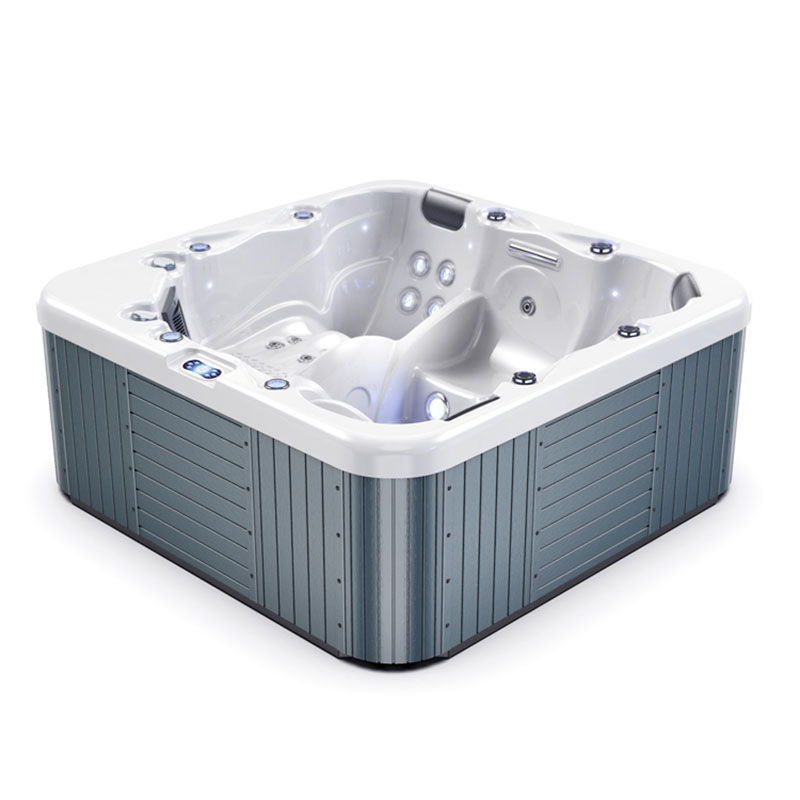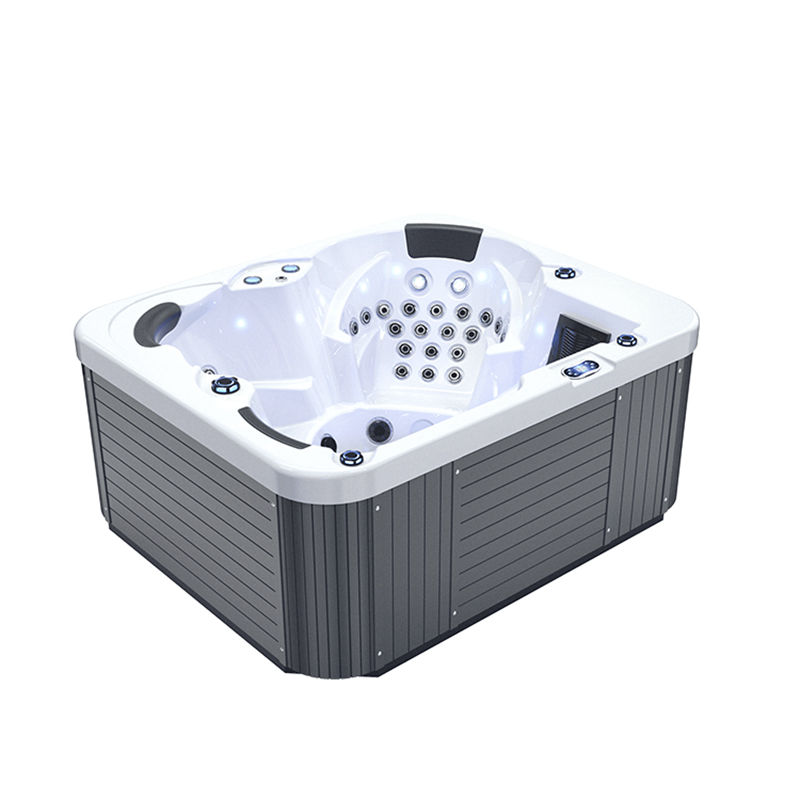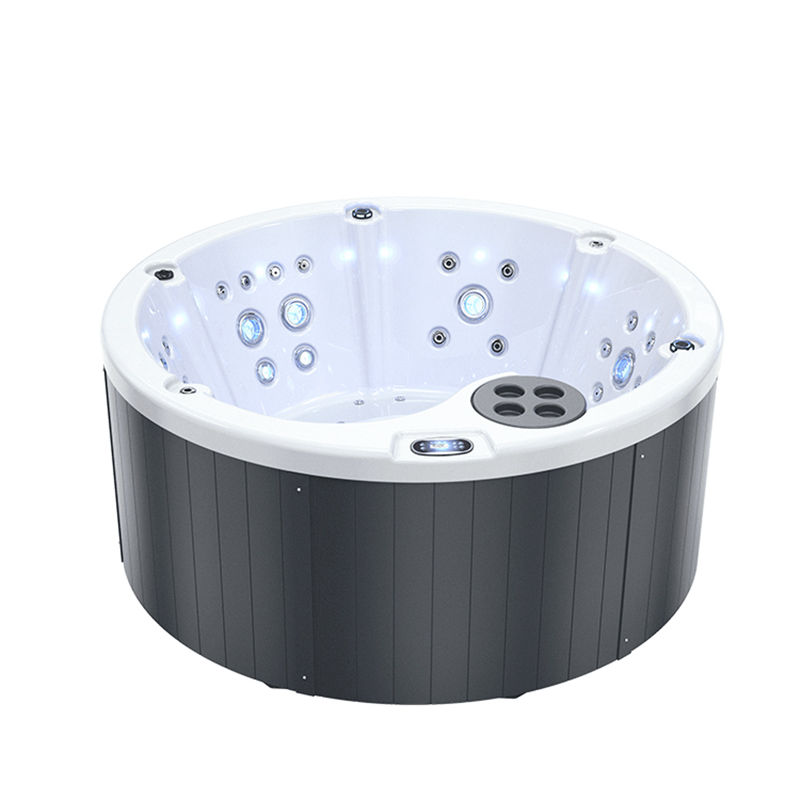As temperatures drop, many people find using an outdoor spa hot tub in winter an ideal way to relax and enjoy a warm, hydrotherapy experience. However, cold climates place additional demands on outdoor spa hot tubs, especially in extreme weather.
To ensure safety, enhance user experience, and protect the life of your spa hot tub, you need to keep some key items and take necessary precautions around your spa hot tub.
This article will explore the essential items and their functions for using an outdoor spa hot tub in winter. Whether you're looking for safety or increased winter comfort, these tips will help you enjoy the thrill of an outdoor spa in cold weather.
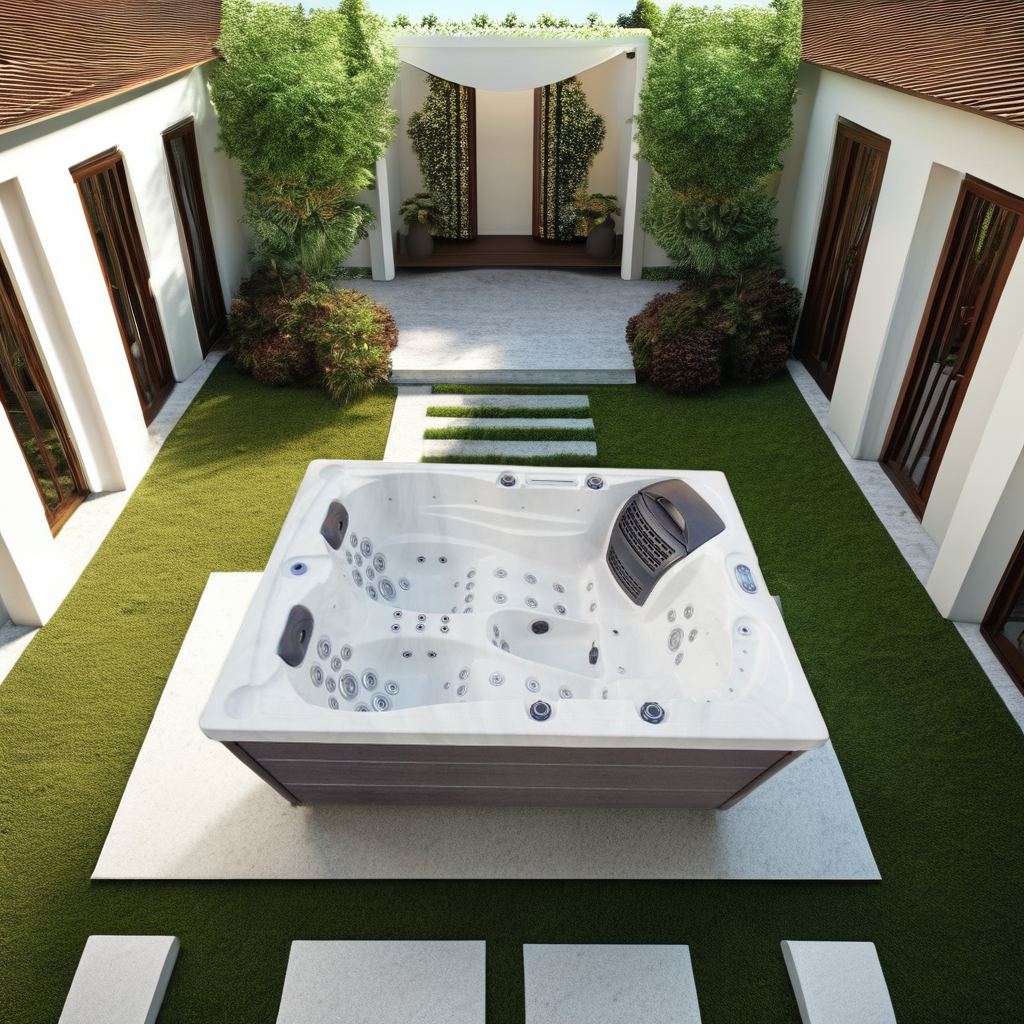
Insulation Cover
An insulation cover is one of the most important items for outdoor spa hot tubs in winter. It not only reduces heat loss from the spa hot tub but also maintains water temperature, reducing electricity costs.
1. Reduce Heat Loss: Cold winter air quickly removes heat from the water surface. Without an insulation cover, the water temperature drops rapidly, causing the heater to operate more frequently, consuming more electricity. A high-quality thermal cover typically features a thick layer of insulation, effectively reducing heat loss and maintaining the water temperature within your outdoor spa hot tub.
2. Preventing Evaporation: A thermal cover not only maintains the water's temperature but also reduces evaporation. Especially during cold, dry winters, water evaporates more quickly, requiring frequent refills. Without a cover, the water level can drop too quickly, potentially causing the heater or pump to run dry and damaging the unit.
3. Providing Additional Safety: Rain, snow, leaves, and other debris from the outdoor environment can easily enter your spa hot tub during winter, contaminating the water. Using an thermal cover effectively prevents these foreign particles from entering and provides an extra layer of safety for families, especially those with children.
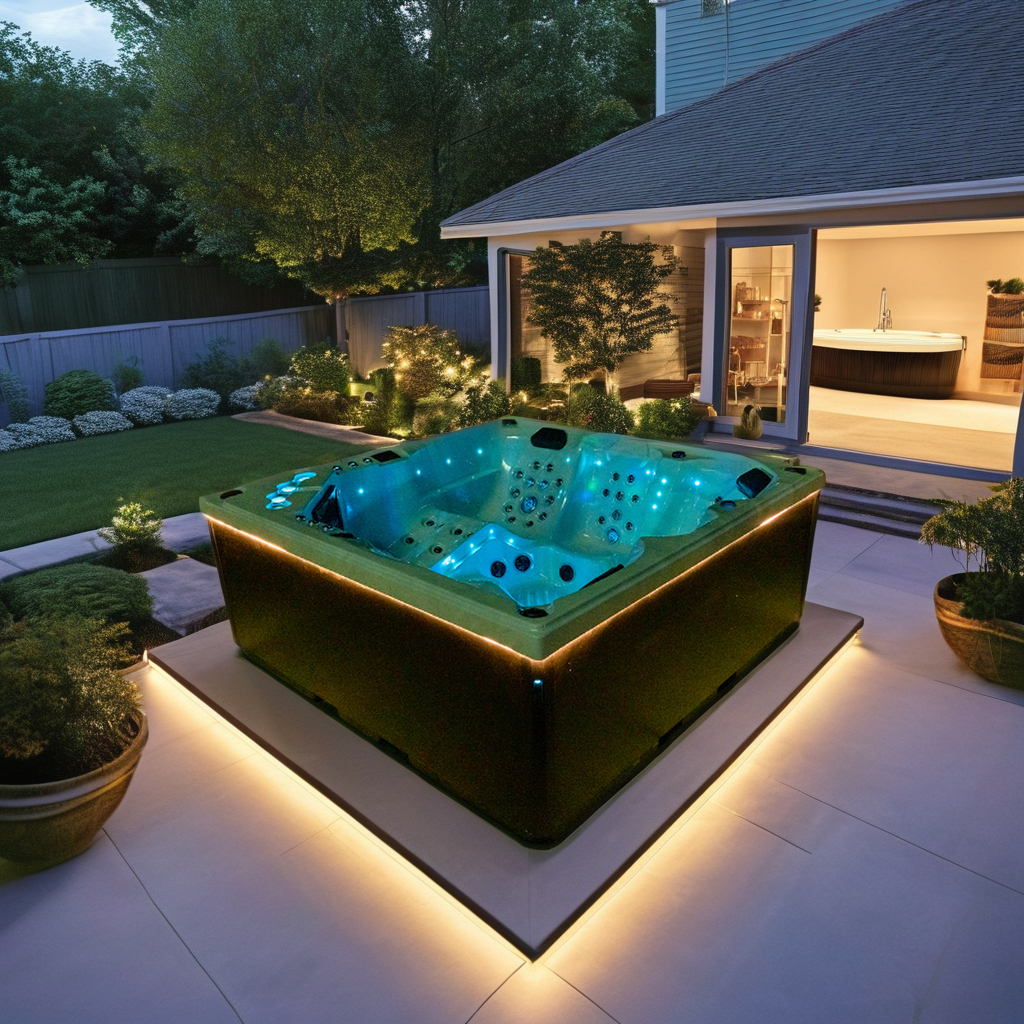
Snow Removal Tools
If you live in an area with frequent winter snowfall, it's essential to have the right snow removal tools for your spa hot tub.
1. Clearing a Path: During heavy snowstorms or heavy snowfall, the path to your outdoor spa hot tub may be covered in thick snow. This not only makes access to the spa hot tub inconvenient but also increases the risk of slips and falls. Snow removal tools, such as snow shovels, snow blowers, and ice scrapers, can help you clear paths and ensure safe entry.
2. Protecting the spa hot tub surface: Snow and ice can accumulate on the lid and rims of a spa hot tub, adding extra weight and potentially damaging the lid. Therefore, it's important to gently remove snow with a soft-bristled brush or specialized tools. Avoid using sharp tools that might scratch the lid or tub surface.
Floor mats or anti-slip mats
Floor mats or anti-slip mats are essential for preventing slips in winter. Slippery and icy surfaces can be a serious problem, especially around outdoor spa hot tubs, where slipping can be more common.
1. Providing anti-slip protection: When exiting a spa hot tub, wet feet contacting the cold ground increases the risk of slipping. Using specialized anti-slip mats can effectively reduce this risk. These mats are typically made of waterproof material and provide excellent grip, ensuring safety.
2. Warmth: In addition to being non-slip, a floor mat also provides warmth, preventing the discomfort of standing barefoot on cold surfaces. Choosing a soft yet sturdy floor mat not only increases safety but also enhances comfort.
Outdoor Heater
Even though the water in an outdoor spa hot tub is warm enough, the chilly air can be quite uncomfortable when you step out. Installing an outdoor heater is a great option for increased comfort.
1. Increased Comfort: An outdoor heater provides warmth to the surrounding area, reducing the chill you experience after exiting the spa hot tub. Especially in extremely cold weather, the cold air after exiting the water can cause your body to cool down quickly, so using a heater can help maintain a comfortable temperature.
2. Variety of Types: There are many different types of outdoor heaters available, including electric, gas, and infrared. Choose the right device based on your outdoor environment and power supply.
3. Portability: Some heaters are portable and can be moved to the area you want to heat. This makes them ideal for use near outdoor spa hot tubs, providing targeted heating.
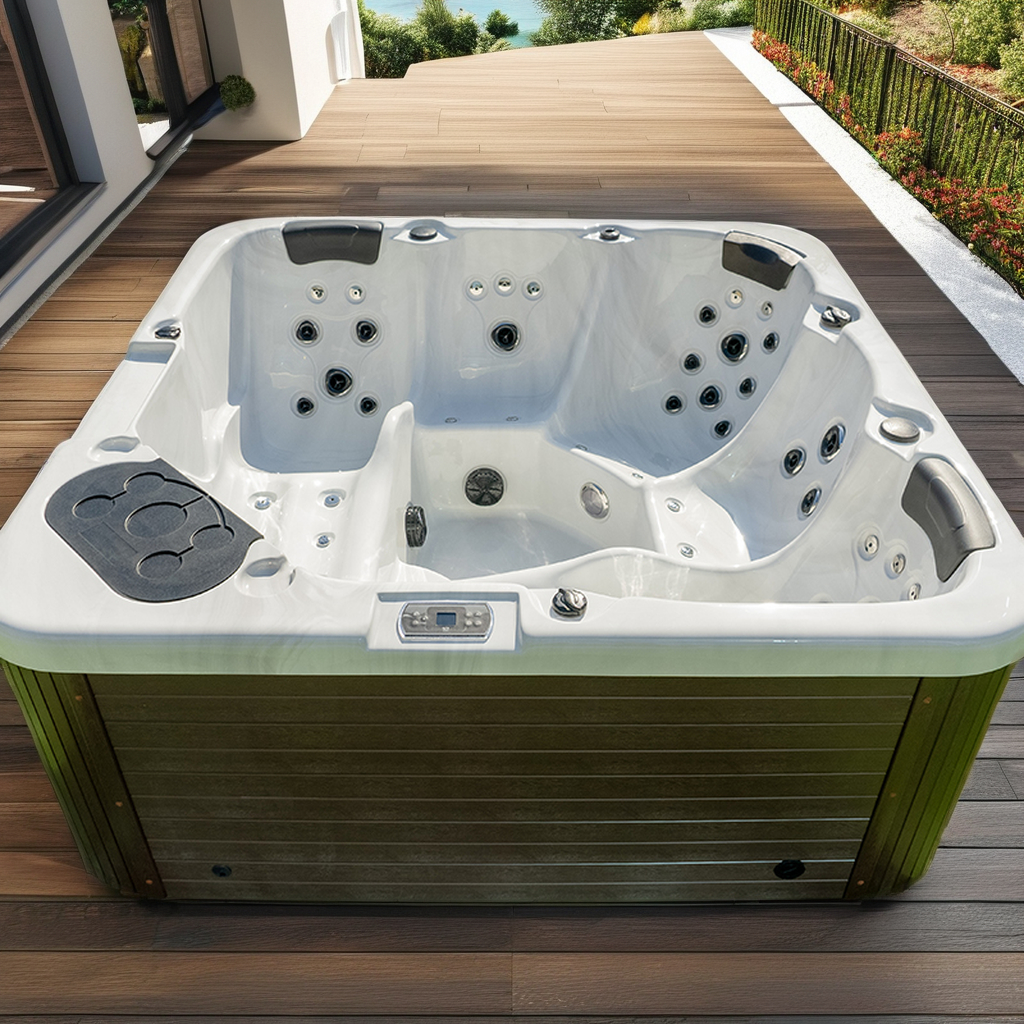
Windbreaks or Pergolas
In winter, cold winds not only lower the temperature around your outdoor spa hot tub but also accelerate the loss of water temperature. Installing a windbreak or pergolas around your spa hot tub is an effective solution.
1. Reduce Wind: Wind removes heat from the air, accelerating the cooling process of the spa hot tub water. Installing a windbreak effectively reduces the impact of cold wind on the tub, maintaining a warm environment longer.
2. Increase Privacy: In addition to providing wind protection, a barrier or pergolas can also increase the privacy of your outdoor spa hot tub, allowing you to enjoy a more relaxing time in the cold winter weather. You can choose from wooden fencing, shade cloth, or glass barriers for both practical and aesthetic appeal.
3. Prevent Snow and Ice Accumulation: Pergolas not only block wind but also provide a shield during heavy snow, preventing excessive snow accumulation around the spa hot tub and reducing the hassle of cleanup.
Temperature Control Sensors and Heating Devices
To ensure safe operation of your outdoor spa hot tub in winter, installing temperature control sensors and appropriate heating devices is crucial. These devices help maintain a consistent water temperature and prevent damage to the tub due to low temperatures.
1. Preventing Low Water Temperatures: Temperature control sensors monitor the spa hot tub's water temperature in real time and automatically adjust the heating device to ensure the water remains within the desired comfort range. This is particularly important during winter to prevent the water temperature from dropping too low and overloading the heater.
2. Preventing Pipe Freezing: In extremely cold weather, the pipes in your outdoor spa hot tub can freeze due to low water temperatures, potentially damaging the tub. Temperature control devices and additional heating devices can effectively prevent freezing and ensure proper operation of your spa hot tub during the winter.
Humidifiers
Dry winter weather, especially in cold regions, can lead to dry skin and discomfort. Installing a humidifier near your outdoor spa hot tub can help keep your skin moisturized while adding a suitable amount of moisture to the air.
1. Relieve Dry Air: A humidifier releases moist air around your spa hot tub, improving the dry outdoor environment, especially during cold winter months. This not only helps you enjoy your spa hot tub more fully, but also relieves dry skin and respiratory irritation caused by low humidity.
2. Improve Air Quality: In addition to moisturizing the air, a humidifier also improves air freshness, especially during windy winter months when the air is filled with dust and other particulate matter. Proper humidity reduces the concentration of suspended particles in the air, providing a more comfortable bathing environment.
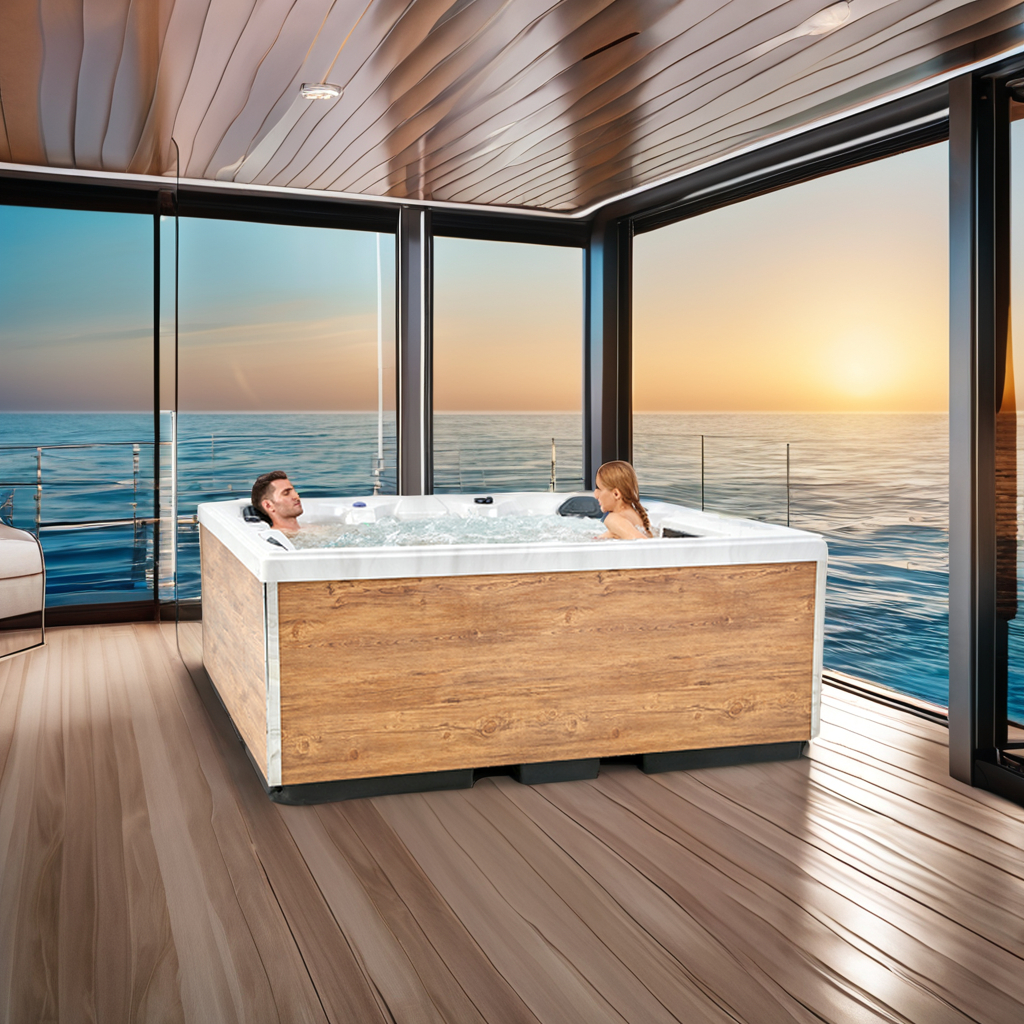
Proper Lighting
In winter, darkening occurs earlier, and outdoor visibility may be reduced. Therefore, providing appropriate lighting around your outdoor spa hot tub is an important step in ensuring safety.
1. Ensure Safety: When entering and exiting an outdoor spa hot tub, dimly lit areas can easily lead to accidents such as slips and falls. Installing lighting, especially waterproof and windproof outdoor lamps, can effectively improve nighttime visibility and reduce accidents.
2. Adding Ambiance: Besides providing illumination, appropriate outdoor lighting can enhance the ambiance of your spa hot tub and improve your overall experience. Choose warm yellow lighting for a cozy and relaxing atmosphere, or colorful lighting for added visual interest.
What are your payment and delivery conditions?
Our standard payment terms are T/T with a 30% deposit and the remaining 70% payable before shipment. Typical lead time is within 30 days after receiving the deposit. Shipments are made from Huangpu port, China. For buyers requesting Wholesale or Customized orders, we provide proforma invoices and formal sales quotes that detail prices, shipping terms, and any applicable promotions.


